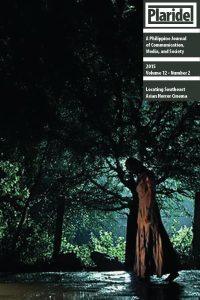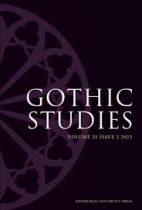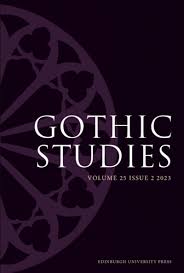2015
 This article offers a brief historical and theoretical overview of found footage films and their contribution to the horror genre, and focuses in more detail on four Southeast Asian productions of the kind made between 2009-2012: Keramat/Sacred (Servia & Tiwa, 2009), Seru/Resurrection (Asraff, Pillai, Andre & Jin 2011), Haunted Changi (Kern, Woo & Lau, 2010), and Darkest Night (Tan, 2012), all of which can be viewed as an alternative to the mainstream local horror cinema. The paper argues that the two most common strategies used by found footage horror films (including the four films in question) are the techniques that effectively authenticate the horror experience: inducing a heightened perception of realism in the audience and a contradictory to it feeling of perceptive subjectivity.
This article offers a brief historical and theoretical overview of found footage films and their contribution to the horror genre, and focuses in more detail on four Southeast Asian productions of the kind made between 2009-2012: Keramat/Sacred (Servia & Tiwa, 2009), Seru/Resurrection (Asraff, Pillai, Andre & Jin 2011), Haunted Changi (Kern, Woo & Lau, 2010), and Darkest Night (Tan, 2012), all of which can be viewed as an alternative to the mainstream local horror cinema. The paper argues that the two most common strategies used by found footage horror films (including the four films in question) are the techniques that effectively authenticate the horror experience: inducing a heightened perception of realism in the audience and a contradictory to it feeling of perceptive subjectivity.



 The waiting woman is a ghost who appears to be endlessly waiting – for recognition, for her lover, for a chance to reincarnate, or to exact revenge. In Asia, her roots can be found in early medieval Chinese records of the strange, arguably the oldest written ghost stories in the region. The romanticized version of this ghost, introduced in Tang Xianzu’s drama Peony Pavillion (Mudan ting, 1598), influenced many writers of Japanese kaidan (strange) stories and merged with East and Southeast Asian ghostlore that continues to inspire contemporary local fiction and films. The article proposes to read the figure of the waiting woman as a representation of the enduring myth of the submissive Asian femininity and a warning against the threat of possible female emancipation brought about by the socio-economic changes caused by modernisation.
The waiting woman is a ghost who appears to be endlessly waiting – for recognition, for her lover, for a chance to reincarnate, or to exact revenge. In Asia, her roots can be found in early medieval Chinese records of the strange, arguably the oldest written ghost stories in the region. The romanticized version of this ghost, introduced in Tang Xianzu’s drama Peony Pavillion (Mudan ting, 1598), influenced many writers of Japanese kaidan (strange) stories and merged with East and Southeast Asian ghostlore that continues to inspire contemporary local fiction and films. The article proposes to read the figure of the waiting woman as a representation of the enduring myth of the submissive Asian femininity and a warning against the threat of possible female emancipation brought about by the socio-economic changes caused by modernisation.